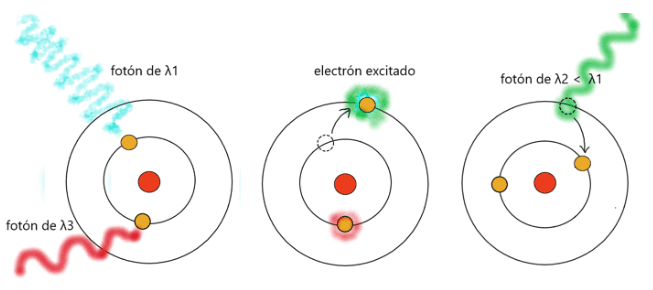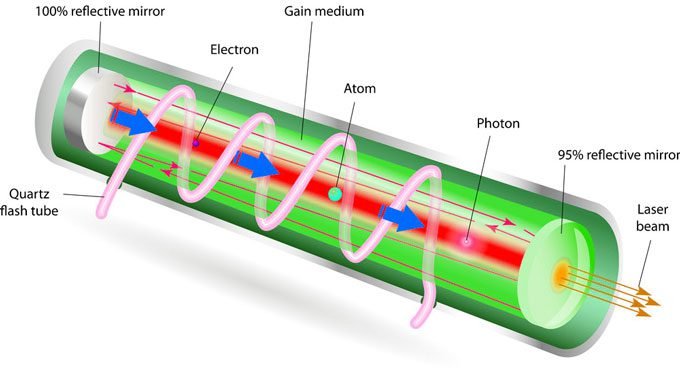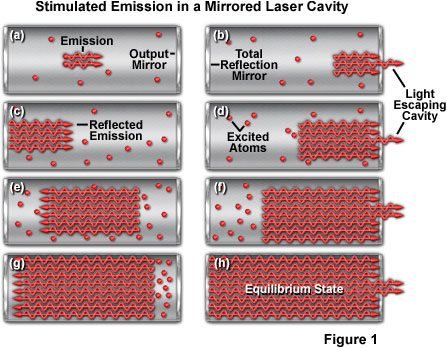This is the first of a series of posts related to lasers. This post’s topic is about the principle of laser operation.
The physics behind
Laser is the acronym of “Light Amplification by Stimulated Emission of Radiation”. When a photon, a light particle, interacts with an atom, an electron gets out from an orbit to another further away from the nucleus. It’s said that the atom moved from fundamental state to an excited state.

In some atoms, an electron stays at a more energetic level for a longer time, it’s said that these atoms are in a meta-stable state. Duration time depends on the material.
Spontaneous and stimulated emission
In some cases, the electron return to previous orbit, because the excited state is unstable. This is spontaneous emission, shown in the figure above. To occur a stimulated emission, a photon must incide on the atom at an excited state. It returns to the fundamental state and emits 2 photons instead of one.
Laser operation
Why the laser light is monochromatic, coherent (without phase shift between photons), and with very low dispersion? In a laser, atoms that make stimulated emissions are in the gain medium. It’s used a material whose atoms can be on meta-stable mode, can be a gas, a crystal, or glass fiber. This material is in an optic cavity or resonator, consist of one side has a high reflective mirror, almost 100% reflective, and on the opposite side, a reflective material that allows partial light transmission. It’s in this part where the laser light comes from.

To make stimulated emission, first, it’s necessary to excite atoms, the mechanism can be an electric current or a quartz flash tube, which excites atoms with a light similar to a camera flash. After excitation, some photons are liberated when some atoms return to the fundamental state. However, inside optical cavity, photons are reflected in the mirrors, causing stimulated emission in atoms with a meta-stable state. Increasing the number of atoms in the same phase.

In the next Electronics post, I will show some types of laser.




1 thought on “How does the laser work?”